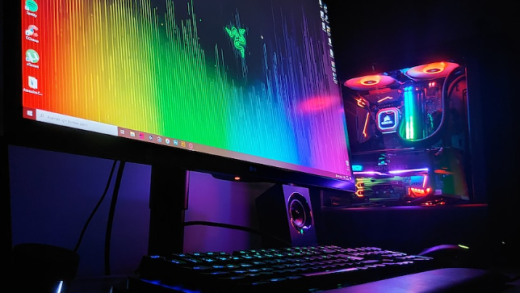Creating a home theater that delivers an immersive and captivating experience requires careful consideration of various factors. From audio to video, seating to room acoustics, each element plays a crucial role in achieving the best configuration. In this article, we will explore the key components and configurations that can elevate your home theater to new heights, ensuring an unparalleled cinematic experience.
1. Audio Configuration:
The audio setup is a fundamental aspect of any home theater. To achieve a truly immersive experience, consider the following components and configurations:
a) Surround Sound Systems: Opt for a 5.1 or 7.1 surround sound system, consisting of multiple speakers strategically placed around the room. This configuration creates a three-dimensional audio environment, enhancing the realism of movie soundtracks.
b) Dolby Atmos: For the ultimate audio experience, consider incorporating Dolby Atmos technology. This system utilizes overhead speakers or upward-firing speakers to create a multidimensional soundstage, allowing sound to move freely around the room, immersing the viewer in a truly lifelike audio experience.
c) Speaker Placement: Proper speaker placement is crucial for optimal audio performance. Follow industry guidelines for positioning speakers, ensuring balanced sound distribution and accurate imaging.
2. Video Configuration:
To achieve stunning visuals that rival a commercial cinema, consider the following video configurations:
a) Display Technology: Choose between a high-quality 4K Ultra HD television or a projector and screen setup. Both options have their advantages, with projectors offering larger screen sizes and TVs providing sharper image quality.
b) Screen Size and Viewing Distance: Determine the ideal screen size based on the viewing distance. Following the Society of Motion Picture and Television Engineers (SMPTE) guidelines, ensure the screen fills a significant portion of the viewer’s field of vision without causing discomfort.
c) Calibration: Properly calibrate the display to achieve accurate colors, contrast, and brightness levels. Utilize professional calibration tools or seek the assistance of a qualified technician to ensure optimal visual performance.
3. Room Acoustics:
Creating an acoustically optimized environment is essential for a home theater. Consider the following aspects:
a) Soundproofing: Minimize external noise interference by soundproofing the room. Use acoustic panels, bass traps, and specialized insulation to reduce sound transmission and enhance audio clarity.
b) Room Shape and Dimensions: The room’s shape and dimensions can significantly impact sound quality. Avoid square or rectangular rooms, as they can cause audio reflections and standing waves. Opt for irregularly shaped rooms or incorporate acoustic treatments to mitigate these issues.
c) Seating Placement: Proper seating placement can enhance the audio experience. Consider the “sweet spot” principle, where the primary seating position is centered between the speakers for optimal soundstage immersion.
Conclusion:
Designing the best configuration for a home theater involves careful consideration of audio, video, and room acoustics. By implementing a surround sound system, incorporating Dolby Atmos technology, choosing the right display, calibrating it accurately, and optimizing room acoustics, you can create a truly immersive cinematic experience within the comfort of your home. Remember, attention to detail and adherence to industry standards are key to achieving the best possible configuration for your home theater. So sit back, relax, and enjoy the magic of the silver screen in your own personal cinema.




